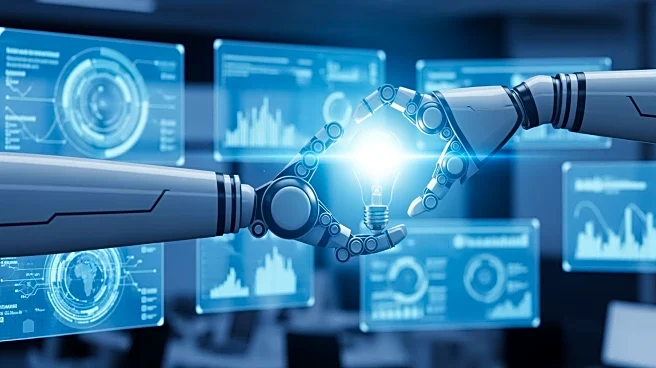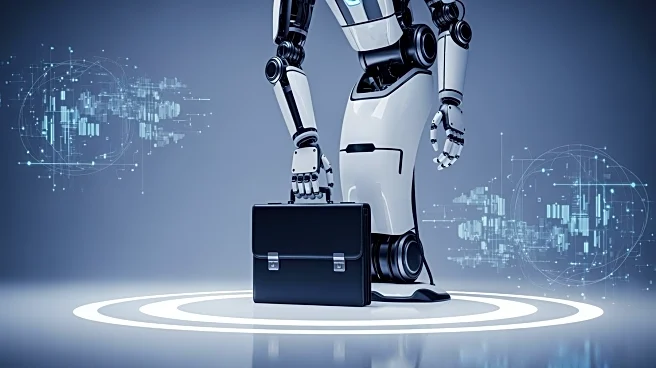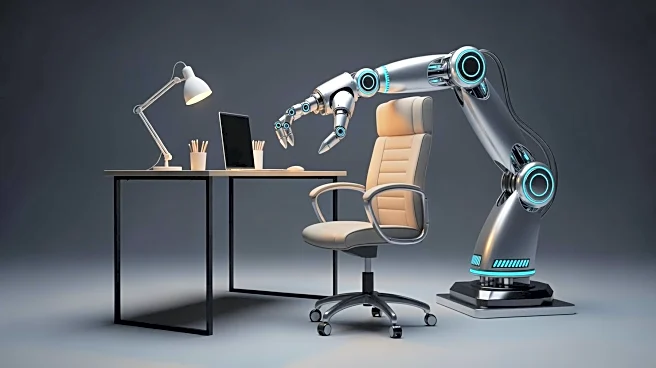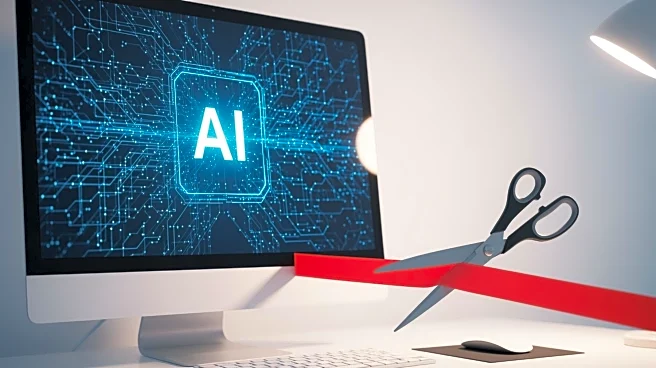What's Happening?
In 2025, AI-driven layoffs have become a significant trend, with major companies like Amazon and Salesforce reducing their workforce to invest more heavily in artificial intelligence. Amazon recently laid
off 14,000 corporate employees, while Salesforce cut 4,000 customer support roles, citing AI's ability to perform a substantial portion of their work. This trend is not isolated to the U.S.; companies across Europe are also adopting similar strategies. According to a report by Challenger, Gray & Christmas, the U.S. experienced the highest level of layoffs in October since 2003, with job cuts reaching 153,074, marking a 183% increase from September. This has led to a challenging economic environment where professionals are considering transitioning to new industries or enhancing their skill sets to remain relevant.
Why It's Important?
The rise in AI-driven layoffs highlights a significant shift in the job market, emphasizing the need for workers to adapt to technological advancements. As AI continues to replace traditional roles, professionals must focus on upskilling to remain competitive. This shift could lead to a more technologically literate workforce, with AI literacy becoming a baseline requirement for many jobs. The demand for skills that complement AI, such as statistical analysis and management, is likely to increase, offering new career opportunities for those willing to adapt. However, this transition also poses challenges, as workers must invest time and resources into acquiring new skills, potentially widening the gap between those who can adapt and those who cannot.
What's Next?
As AI continues to evolve, companies are expected to further integrate these technologies into their operations, potentially leading to more layoffs. Workers will need to proactively seek opportunities to upskill, focusing on areas that complement AI technologies. Educational institutions and training programs may play a crucial role in providing the necessary resources for workers to transition into new roles. Additionally, policymakers might need to address the broader economic implications of AI-driven job displacement, potentially considering measures to support affected workers.
Beyond the Headlines
The ethical implications of AI-driven layoffs are significant, as companies may use AI as a scapegoat for broader economic issues or past hiring mistakes. This raises questions about corporate responsibility and the transparency of layoff decisions. Furthermore, the rapid pace of AI adoption could exacerbate existing inequalities in the workforce, as those with access to education and training are better positioned to adapt. Long-term, this could lead to a more polarized job market, with a clear divide between high-skilled, tech-savvy workers and those in roles vulnerable to automation.












